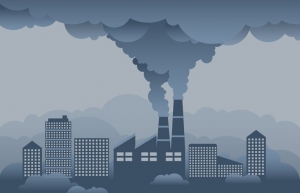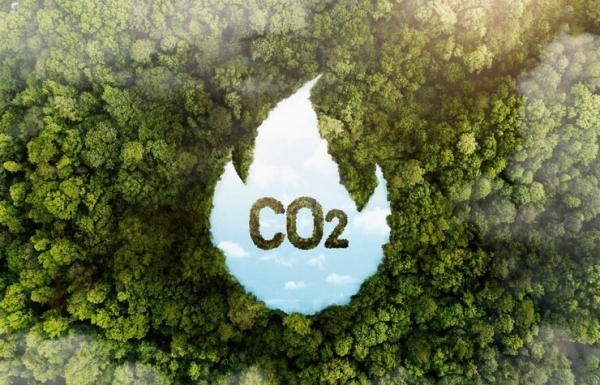At a seminar on the carbon credit market held in Ho Chi Minh City last week, experts stressed the urgent need to complete the legal system to ensure the sustainable development of Vietnam’s carbon credit market.
| Suggestions are pouring in for the development of carbon credits, illustration photo/ Source: freepik.com |
Professor Vo Xuan Vinh, director of the Business Research Institute of Ho Chi Minh City University of Economic Sciences, highlighted that Vietnam currently has just over 1,900 facilities conducting greenhouse gas (GHG) emissions inventories as required by regulations, and marks them as potential players in the field of greenhouse gas emissions. the carbon credit market.
In addition, Vietnam has 276 projects with nearly 30 million carbon credits certified under the Clean Development Mechanism. “To date, more than 300 programs and projects have engaged in voluntary carbon credit transactions,” Vinh noted.
He also believed that Vietnam’s 14 million hectares of forests offer substantial potential for generating carbon credits through forest protection and restoration projects.
“Vietnam could sell 57 million carbon credits to international organizations, earning hundreds of millions of dollars annually, while current prices for carbon credits are around $5 per credit. But how is this income distributed? Will it go to the foresters and the government, or will it be divided in some proportion?†Vinh wondered.
He noted that in accordance with Article 139 of the Environmental Protection Act, the government encourages participation in the carbon credit market and has established rules regarding the responsibilities and benefits of the parties involved. “But the law does not yet specify the exact income distribution ratios from the sale of carbon credits. Therefore, revenues will be determined based on contractual agreements between the parties involved,” he said.
“Investing in green technology and renewable energy helps reduce costs in the long term and improves operational efficiency and compliance with stricter emissions regulations.”
Meanwhile, Cao Tung Son, Head of Meteorology, Hydrology and Climate Change at the Ministry of Natural Resources and Environment of Ho Chi Minh City, pointed out that the city has many advantages in implementing climate change mitigation projects to generate carbon credits.
These include using roofs of public buildings for energy savings and renewable energy production, reducing emissions and switching to electric motorcycles.
“The government should issue detailed regulations on the operational mechanisms of the market, including the processes for creating, certifying and trading carbon credits. This would provide businesses and citizens with specific guidelines to comply with and participate effectively in the market,” he said.
Son suggested that companies could buy carbon credits to offset emissions that exceed their quotas.
Nevertheless, he also warned that such transactions must comply with transparency and disclosure rules to prevent abuse, and ensure that the purchase of credits does not lead to uncontrolled emissions.
“Currently, carbon credits sold on the international market often fetch higher prices than those on the domestic market. However, the procedures for selecting international exchanges for listing credits and the rules for selecting international certification bodies for carbon credits remain undefined, he said. “Our department urges the Ministry of Natural Resources and Environment to provide guidance on these matters.”
From a legal perspective, Dr. Vo Trung Tin, head of the Department of Land and Environmental Law of the Faculty of Commercial Law of Ho Chi Minh City University of Law, stressed the need to establish a comprehensive procedure for implementing carbon credit projects.
“It is necessary to amend Decree No. 06/2022/ND-CP to include specific rules for carbon credit projects,” he asserted.
Tin explained that a carbon credit project under the UN Framework Convention on Climate Change must follow essential steps such as registering the project idea and methodology, project registration, reporting on project implementation, validation and issuance of carbon credits.
“In terms of the competent authority, the government could mandate various ministries to manage the recognition of methodologies, approve project ideas and projects, and issue carbon credits. This should be in line with the responsibilities of these ministries in implementing the monitoring, reporting and verification system at sectoral and facility levels,” he said.
Lawyer Le Duy Khang of Tin & Tam Law Firm warned that the government must investigate and immediately issue coherent regulations.
“The carbon credit trading platform is expected to launch in 2025 and be fully operational in 2028. Any delays could result in significant revenue losses and create accounting challenges for companies dealing with this new asset class. The government should establish domestic carbon credit exchanges, creating a transparent and efficient trading platform,” Khang said.
Last week’s seminar highlighted that promoting participation of financial institutions and investment funds in the market is essential to increase liquidity and diversify the types of carbon credits available for trading.
“In particular, the government should encourage investments in green technology and emission reduction projects through financial support policies and tax breaks,” said Dr. Le Hoang The, director of the Global Carbon Credit Training Center. “The completion of the legal framework for the carbon credit market not only facilitates the participation of companies, but also ensures the transparency and efficiency of the market.”
 |
Carbon capture must quadruple by 2050 to meet climate targets: report
By 2050, humanity must sustainably remove four times as much CO2 from the air as now to keep global warming below the crucial target of two degrees Celsius, researchers said Tuesday. |
 |
Exposing the truth about the carbon credit market
Carbon credits have recently made headlines in Vietnam, with the concept often surrounded by exaggerated expectations of an easy option, or suspicions of what seem unlikely efforts to negate greenhouse gas emissions. |


